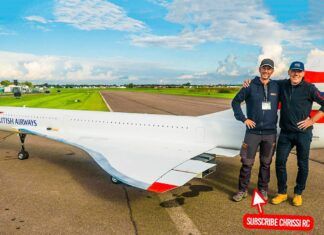
AVweb’sGeneral Aviation Accident Bulletinis taken from the pages of our sister publication,Aviation Safetymagazine. All the reports listed here are preliminary and include only initial factual findings about crashes. You can learn more about the final probable cause on the NTSB’s website atwww.ntsb.gov. Final reports appear about a year after the accident, although some take longer. Find out more aboutAviation Safetyatwww.aviationsafetymagazine.com.
January 2, 2019, Sacramento, Calif.
Progressive Aerodyne SeaRey LSA
The amphibian nosed over and became partially submerged during a water landing. The private pilot received minor injuries; the passenger succumbed to injuries 14 days after the accident. The airplane was substantially damaged. Visual conditions prevailed.
The pilot reported that, after departure, another airplane distracted his attention and he forgot to retract the landing gear. It was not until the airplane was just about to touch down on the river that he realized that the landing gear was still extended. When the airplane touched down, it immediately nosed down and partially submerged.
January 3, 2019, Wilkes-Barre, Penn.
Piper PA-24-250 Comanche 250
At 1600 Eastern time, the airplane sustained substantial damage during a forced landing to a field while on approach to land. The commercial pilot and the flight instructor were not injured. Visual conditions prevailed.
The landing gear did not fully extend; the gear handle was “stuck” mid-extension and would not retract. The emergency extension handle would not release. About this point, the engine failed to produce power. Unable to glide to the runway, the pilot made a forced landing on a soccer field. The airplane struck a ditch, damaging the airframe and an engine mount.
January 6, 2019, Flint, Mich.
Cessna T210 Turbo Centurion
The pilot experienced an unsafe landing gear indication and landed with the gear partially extended at about 1640 Eastern time. The private pilot and three passengers were not injured, but the airplane sustained substantial damage. Visual conditions prevailed.
Upon raising the landing gear after takeoff, the gear motor continued to operate longer than normal, and the pilot heard an abnormal sound toward the end of the sequence. The right main gear was hanging at about a 45-degree angle, and the left main gear was not visible. The pilot completed the appropriate checklists, without change. The pilot declared an emergency and ATC confirmed during a fly-by that the main gear was not extended. During the landing, the nose gear remained extended and the two main gear were retracted. The airplane came to rest on the runway and the passengers egressed without further incident.
January 7, 2019, Soddy-Daisy, Tenn.
Bellanca 17-30A Super Viking
At about 1334 Eastern time, the airplane was substantially damaged when it impacted a lake while maneuvering. The commercial pilot and passenger were fatally injured. Visual conditions prevailed.
A witness observed the airplane appear to perform “a tight U-turn” about two or three treetop heights above the water surface. The airplane then spiraled straight down counterclockwise and impacted the lake.
January 7, 2019, Colusa, Calif.
Beechcraft A36 Bonanza
The airplane collided with terrain at about 1050 Pacific time, two miles south of its departure airport. The private pilot and passenger aboard were fatally injured. The airplane was destroyed. Instrument conditions existed in the area; an IFR flight plan had been filed.
A witness saw the airplane taxi out and heard its pilot on the CTAF. The witness estimated the cloud ceiling was about 500 feet and visibility was about one mile. Preliminary data indicate the airplane departed to the southwest and climbed through about 1000 feet MSL when a right turn was followed by a rapid descent until radar contact was lost.
January 12, 2019, Uvalde, Texas
Canadair CL 600 2A12
At about 1130 Central time, the Challenger 601 business jet impacted terrain following a runway excursion while landing at a private airstrip. The airline transport pilot, first officer, flight attendant and six passengers were not injured. The airplane sustained substantial damage. Visual conditions prevailed.
According to an airport representative, the airplane landed hard and a tire either popped or the landing gear tore off. The airplane slid off the runway’s right side, proceeded through a ditch and struck a perimeter fence before coming to a stop. The right main and nose landing gear had collapsed and were damaged. Additional damage included the right wing, right inboard flap, nose and vertical stabilizer.
January 13, 2019, Salem, S.D.
Piper PA-28-181 Archer II/III
The airplane impacted terrain at about 1425 Central time. The solo private pilot was fatally injured; the airplane was substantially damaged. Visual conditions prevailed.
While en route, the instrument-rated pilot reported to ATC that he was having chest pains and was blacking out. The controller tried to get the pilot to land anywhere but lost contact with the airplane. The 69-year-old pilot’s third-class medical certificate was dated October 5, 2016. Weather at the nearby departure airport included wind from 200 degrees at 13 knots, 10 miles of visibility and an overcast at 1500 feet. The temperature was 1 degree C; dew point -3 degrees.
This article originally appeared in the April 2019 issue ofAviation Safetymagazine.
For more great content like this,subscribe toAviation Safety!

































